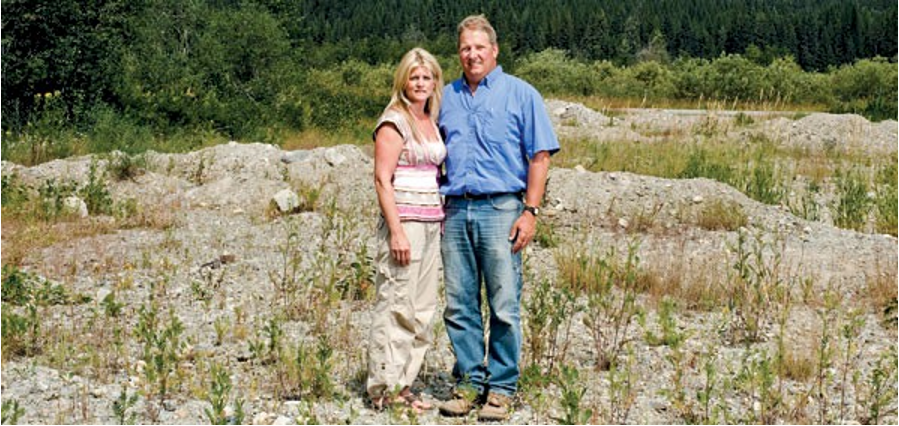
Feds’ attack has left owners unable to use Priest Lake, Idaho property for more than 15 years
Stranglehold: Couple’s fight to build home on own land returns to Supremes
By Bob Unruh
The Sacketts, when their fight with the EPA began years ago
The case of an Idaho couple who bought a parcel of suburban land in Priest Lake, Idaho, to build a home only to be stopped by federal regulators is returning to the U.S. Supreme Court – not quite two decades after it started.
The Pacific Legal Foundation confirmed this week the high court will hear the case of Chantell and Mike Sackett.
They bought the land and were in the process of developing building plans when federal agents from the Environmental Protection Agency and the Army Corp of Engineers launched a war against them.
The Sacketts have been in court fighting for the right to use their property since 2007. Their circumstances of their fight actually started in 2004.
The Supreme Court heard the Sacketts’ case once before, ruling in 2012 that, contrary to EPA’s view, the Sacketts had the right to immediately challenge the agency’s assertion of authority over their homebuilding project. Now the court will consider whether their lot contains “navigable waters” subject to federal control, the PLF explained.
“The Sacketts’ ordeal is emblematic of all that has gone wrong with the implementation of the Clean Water Act,” said Damien Schiff, a senior attorney at Pacific Legal Foundation, which represents the Sacketts. “The Sacketts’ lot lacks a surface water connection to any stream, creek, lake, or other water body, and it shouldn’t be subject to federal regulation and permitting. The Sacketts are delighted that the court has agreed to take their case a second time, and hope the court rules to bring fairness, consistency, and a respect for private property rights to the Clean Water Act’s administration.”
WND had reported last year that the 9th U.S. Circuit Court of Appeals, the most overturned appellate court in the nation, had once again deprived the couple of the use of their property.
Their fight began when the EPA contacted them at their building site and ordered them to give up the ground they’d bought in a subdivision for their home, return it to its original state and allow the feds to monitor their work.
The EPA told the couple they weren’t even allowed to challenge the decision, a dispute which ended with the agency’s first loss in the case, as the Supremes ruled the couple had that right.
However, back in the lower courts, for its second trip, the 9th U.S. Circuit Court of Appeals rejected the Sacketts’ arguments that EPA was mistaken in claiming their land contained wetlands.
Judge Michelle Friedland claimed the Sacketts’ 0.63-acre property, which they purchased in 2004, is 300 feet from Priest Lake, a traditionally navigable water. That means, she claimed, the property is adjacent to a tributary and other wetlands, qualifying for Clean Water Act jurisdiction.
Even multiple presidential administrations have failed to agree on what the Supreme Court said, though. Barack Obama issued a rule based on one part of the opinion, while President Trump replaced that with a more lenient interpretation from another part of the opinion.
The EPA had threatened the couple with fines of $75,000 – continuing apparently into perpetuity, because it wanted to control their suburban lot, without providing any compensation to the couple.
The EPA, under the Clean Water Act, had accused the couple of illegally filling a wetland when they broke ground to build their house in a residential neighborhood near Priest Lake. The EPA told the Sacketts that no home could be built on the lot, despite the fact it had never before established that the lot is a wetland under congressionally mandated criteria.
The Sacketts actually had their local building permit for the lot, and had started preparing it for a modest three-bedroom home in the partially built-out subdivision.
The dry land on the lot has a sewer hookup and is zoned for residential construction. Homes already exist on nearby lots.
Bob Unruh
Summary
Bob Unruh joined WND in 2006 after nearly three decades with the Associated Press, as well as several Upper Midwest newspapers, where he covered everything from legislative battles and sports to tornadoes and homicidal survivalists. He is also a photographer whose scenic work has been used commercially.
From wnd.com